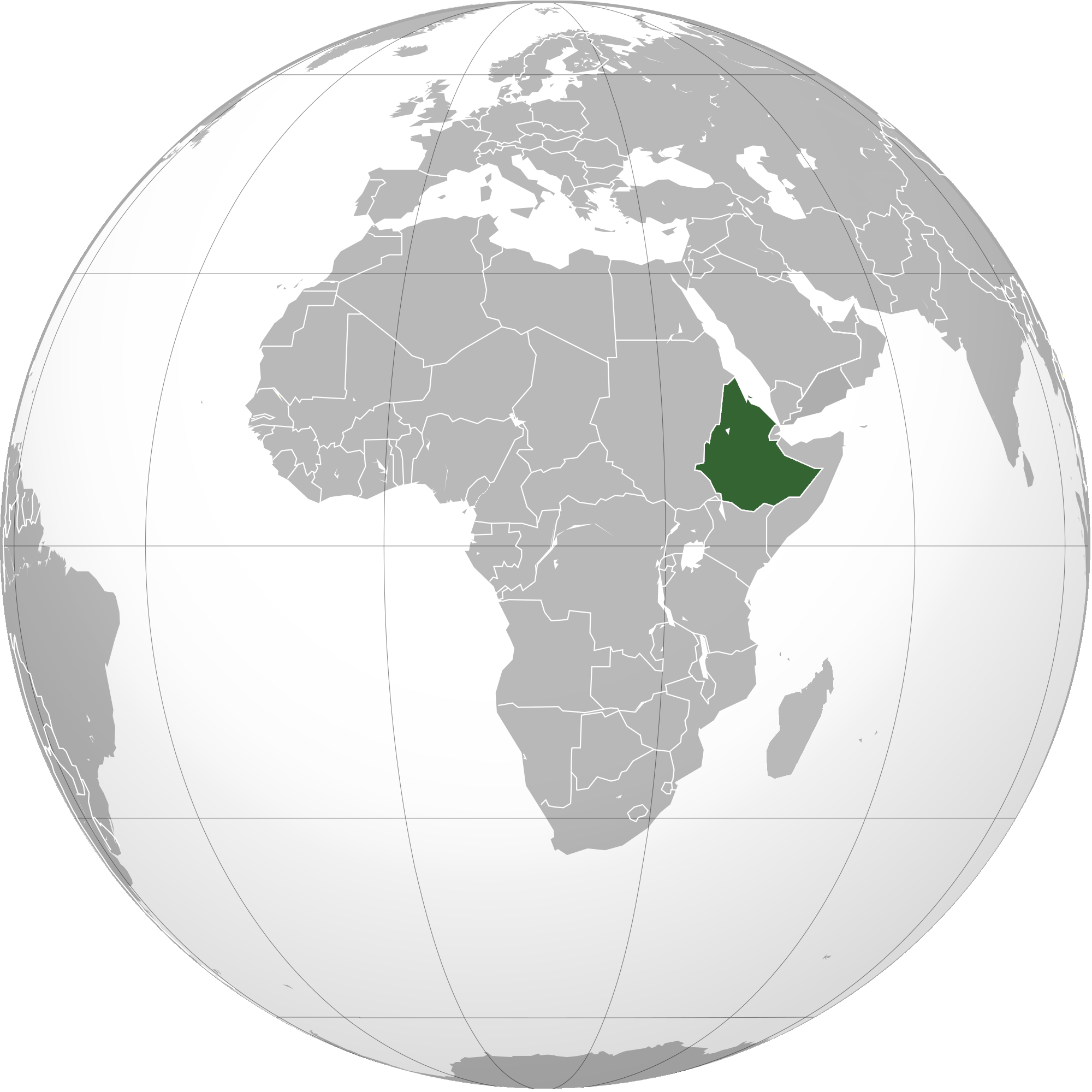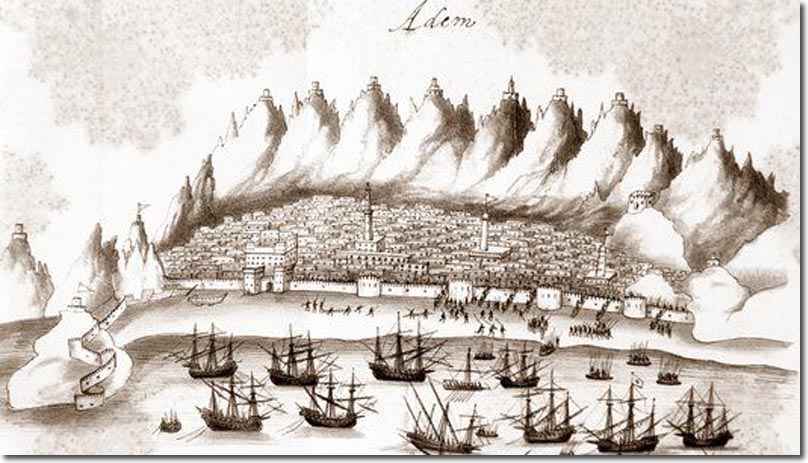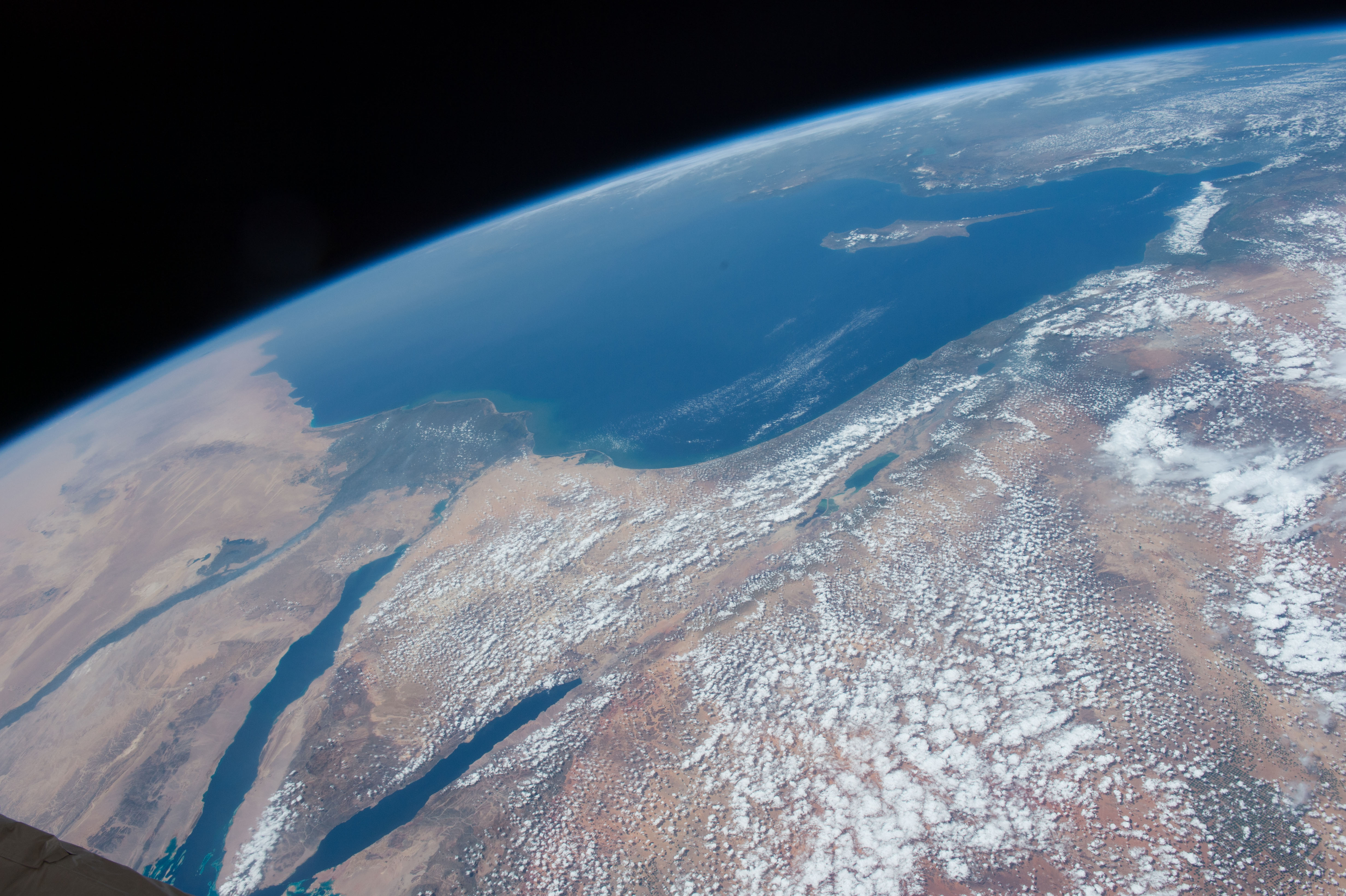|
Tarim, Yemen
Tarim () is a historic town situated in '' Wadi Hadhramaut'' (), Yemen. It is widely acknowledged as the theological, juridical, and academic center of the Hadhramaut Valley. An important center of Islamic learning, it is estimated to contain the highest concentration of descendants of the Islamic Prophet Muhammad known as the Sadah () anywhere in the world. The city is distinguished for producing numerous Islamic scholars, including Imam al-Haddad. Additionally, Tarim is also home to Dar al-Mustafa, a well-known educational institution for the study of traditional Islamic Sciences. History Pre-7th century Wadi Hadhramaut and its tributaries have been inhabited since the Stone Age. Small mounds of flint chippings – debris from the manufacture of stone tools and weapons – and windblown dust can be found close to canyon walls. Further north and east are lines of Thamudic ‘triliths’ with a few surviving crude inscriptions. On the fringes of the Rub' al Khal ... [...More Info...] [...Related Items...] OR: [Wikipedia] [Google] [Baidu] |
Governorates Of Yemen
The Republic of Yemen is divided into twenty-one governorates ('' muhafazah'') and one municipality ( amanah): The governorates are subdivided into 333 districts (''muderiah''), which are subdivided into 1,996 sub-districts, and then into 40,793 villages and 88,817 sub villages (as of 2013). Before 1990, Yemen existed as two separate entities. South Yemen consisted of modern Aden, Abyan, Mahrah, Dhale, Hadramaut, Socotra, Lahij, and Shabwah Governorates, while the rest made up North Yemen. For more information, see Historic Governorates of Yemen. List of governorates Notes: a - Also known as Sanaa City, it is not part of any federal region b - Socotra Governorate was created in December 2013 from parts of the Hadhramaut Governorate, data included there See also * ISO 3166-2:YE References {{DEFAULTSORT:Governorates of Yemen Subdivisions of Yemen Yemen, Governorates Yemen 1 Governorates, Yemen Yemen geography-related lists Yemen Yemen, officially ... [...More Info...] [...Related Items...] OR: [Wikipedia] [Google] [Baidu] |
Stone Age
The Stone Age was a broad prehistory, prehistoric period during which Rock (geology), stone was widely used to make stone tools with an edge, a point, or a percussion surface. The period lasted for roughly 3.4 million years and ended between 4000 Anno Domini, BC and 2000 BC, with the advent of metalworking. It therefore represents nearly 99.3% of human history. Though some simple metalworking of malleable metals, particularly the use of Goldsmith, gold and Coppersmith, copper for purposes of ornamentation, was known in the Stone Age, it is the melting and smelting of copper that marks the end of the Stone Age. In Western Asia, this occurred by about 3000 BC, when bronze became widespread. The term Bronze Age is used to describe the period that followed the Stone Age, as well as to describe cultures that had developed techniques and technologies for working copper alloys (bronze: originally copper and arsenic, later copper and tin) into tools, supplanting ston ... [...More Info...] [...Related Items...] OR: [Wikipedia] [Google] [Baidu] |
Abyssinian Empire
The Ethiopian Empire, historically known as Abyssinia or simply Ethiopia, was a sovereign state that encompassed the present-day territories of Ethiopia and Eritrea. It existed from the establishment of the Solomonic dynasty by Yekuno Amlak around 1270 until the 1974 Ethiopian coup d'état, 1974 coup d'état by the Derg, which ended the reign of the final Emperor, Haile Selassie. In the late 19th century, under Emperor Menelik II, the Menelik II's conquests, empire expanded significantly to the south, and in 1952, Federation of Ethiopia and Eritrea, Eritrea was federated under Selassie's rule. Despite being surrounded by hostile forces throughout much of its history, the empire maintained a kingdom centered on its Orthodox Tewahedo, ancient Christian heritage. Founded in 1270 by Yekuno Amlak, who claimed to descend from the last Kingdom of Aksum, Aksumite king and ultimately King Solomon and the Queen of Sheba, it replaced the Agaw people, Agaw Zagwe Kingdom, kingdom of the Za ... [...More Info...] [...Related Items...] OR: [Wikipedia] [Google] [Baidu] |
Red Sea
The Red Sea is a sea inlet of the Indian Ocean, lying between Africa and Asia. Its connection to the ocean is in the south, through the Bab-el-Mandeb Strait and the Gulf of Aden. To its north lie the Sinai Peninsula, the Gulf of Aqaba, and the Gulf of Suez—leading to the Suez Canal. It is underlain by the Red Sea Rift, which is part of the Great Rift Valley. The Red Sea has a surface area of roughly , is about long, and wide at its widest point. It has an average depth of , and in the central Suakin Trough, it reaches its maximum depth of . Approximately 40% of the Red Sea is quite shallow at less than deep and about 25% is less than deep. The extensive shallow shelves are noted for their marine life and corals. More than 1,000 invertebrate species and 200 types of soft and hard coral live in the sea. The Red Sea is the world's northernmost tropical sea and has been designated a Global 200 ecoregion. Extent The International Hydrographic Organization defines the limi ... [...More Info...] [...Related Items...] OR: [Wikipedia] [Google] [Baidu] |
Aden
Aden () is a port city located in Yemen in the southern part of the Arabian peninsula, on the north coast of the Gulf of Aden, positioned near the eastern approach to the Red Sea. It is situated approximately 170 km (110 mi) east of the Bab-el-Mandeb strait. With its strategic location on the coastline, Aden serves as a gateway between the Red Sea and the Arabian Sea, making it a crucial maritime hub connecting Africa, Asia, and the Middle East. As of 2023, Aden city has a population of approximately 1,080,000 residents, making it one of the largest cities in Yemen. Aden is the capital and principal part of Aden Governorate, encompassing eight districts. During the colonial period, the name ''Aden'' referred to the area along the north coast of the gulf, encompassing Tawahi (Aden), Tawahi, Mualla, Crater (Aden), Crater, and much of Khor Maksar district. The western harbour peninsula, known as ''Little Aden'', now falls within the Al Buraiqeh district, Al Buraiqeh distr ... [...More Info...] [...Related Items...] OR: [Wikipedia] [Google] [Baidu] |
Sabaeans
Sheba, or Saba, was an ancient South Arabian kingdom that existed in Yemen from to . Its inhabitants were the Sabaeans, who, as a people, were indissociable from the kingdom itself for much of the 1st millennium BCE. Modern historians agree that the heartland of the Sabaean civilization was located in the region around Marib and Sirwah. In some periods, they expanded to much of modern Yemen and even parts of the Horn of Africa, particularly Eritrea and Ethiopia. The kingdom's native language was Sabaic, which was a variety of Old South Arabian. Stuart Munro-Hay, ''Aksum: An African Civilization of Late Antiquity'', 1991. Among South Arabians and Abyssinians, Sheba's name carried prestige, as it was widely considered to be the birthplace of South Arabian civilization as a whole. The first Sabaean kingdom lasted from the 8th century BCE to the 1st century BCE: this kingdom can be divided into the " mukarrib" period, where it reigned supreme over all of South Arabia; and the ... [...More Info...] [...Related Items...] OR: [Wikipedia] [Google] [Baidu] |
Himyaritic
Himyaritic is an unattested or sparsely attested Semitic language that was spoken in ancient Yemen, by the Himyarites. It was a Semitic language but either did not belong to the Old South Arabian (''Sayhadic'') languages according to Christian Robin or was, as more widely accepted, not a distinct language from Sabaic. The precise position inside Semitic is unknown because of the limited knowledge of the language if it is indeed a distinct language from Sabaic. Although the Himyar kingdom was an important power in South Arabia since the 1st century B.C., the knowledge of the supposed Himyaritic language is very limited if at all a distinct language, because all known Himyarite inscriptions were written in Sabaic, an Old South Arabian language. The three Himyaritic texts appeared to be rhymed (''sigla ZI 11, Ja 2353 and the Hymn of Qāniya''). Himyaritic is only known from statements of Arab scholars from the first centuries after the rise of Islam. According to their description i ... [...More Info...] [...Related Items...] OR: [Wikipedia] [Google] [Baidu] |
Shabwa
The ancient city of Shabwa (; ) was the capital of the Kingdom of Hadhramaut at the South Arabian region of the Arabian Peninsula. The ruins of the city are located in the north of modern Shabwah Governorate of the Republic of Yemen. Pliny the Elder and Strabo refer to the city as ''Sabota'', formerly a royal city with multiple local temples. History Shabwa was first settled in 13th century BC, and was destroyed by the Himyarites at the end of the 3rd century AD. Ruins Within the walls of the city are the remains of: * the royal palace named Shugair * the temple of goddess Sian Dhu Aleen See also * Middle East Yemen * Shabwa Museum * Ma'rib * Shibam Shibam (), officially the Old Walled City of Shibam (), is a town in Wadi Hadhramaut in eastern Yemen with about 7,000 inhabitants. It is the seat of the Shibam District in the Hadhramaut Governorate. It is known for its mudbrick-made high-ri ... References External links Shibam / Shabwa Archaeological sites in ... [...More Info...] [...Related Items...] OR: [Wikipedia] [Google] [Baidu] |
Eastern Mediterranean
The Eastern Mediterranean is a loosely delimited region comprising the easternmost portion of the Mediterranean Sea, and well as the adjoining land—often defined as the countries around the Levantine Sea. It includes the southern half of Turkey's main region, Anatolia; its smaller Hatay Province; the island of Cyprus; the Greek Dodecanese islands; and the countries of Egypt, Israel, Jordan, State of Palestine, Palestine, Syria and Lebanon. Its broadest uses can encompass the Libyan Sea (thus Libya), the Aegean Sea (thus East Thrace, European Turkey and the mainland and islands of Greece), and the Ionian Sea (thus southern Albania in Southeast Europe) and can extend west to Italy's farthest south-eastern coasts. Jordan is climatically and economically part of the region. Regions The eastern Mediterranean region is commonly interpreted in two ways: *The Levant, including its historically tied neighboring countries, Balkans and islands of Greece. *The Syria (region), region of Sy ... [...More Info...] [...Related Items...] OR: [Wikipedia] [Google] [Baidu] |
Hejaz
Hejaz is a Historical region, historical region of the Arabian Peninsula that includes the majority of the western region of Saudi Arabia, covering the cities of Mecca, Medina, Jeddah, Tabuk, Saudi Arabia, Tabuk, Yanbu, Taif and Al Bahah, Al-Bahah. It is thus known as the "Western Province",Mackey, p. 101. "The Western Province, or the Hejaz[...]" and it is bordered in the west by the Red Sea, in the north by Jordan, in the east by the Najd, and in the south by Greater Yemen, Yemen. Its largest city is Jeddah, which is the second-largest city in Saudi Arabia, with Mecca and Medina, respectively, being the third- and fourth-largest cities in the country. As the location of the Holy city, holy cities of Mecca and Medina, respectively the first and second holiest sites in Islam, the Hejaz is significant in the Arabo-Islamic historical and political landscape. This region is the most populated in Saudi Arabia, and Arabic is the predominant language, as in the rest of Saudi Arabia, ... [...More Info...] [...Related Items...] OR: [Wikipedia] [Google] [Baidu] |
Dhufar
The Dhofar Governorate () is the largest of the 11 governorates in the Sultanate of Oman in terms of area. It lies in southern Oman, on the eastern border with Yemen's Al Mahrah Governorate and the southern border with Saudi Arabia's Eastern Province. It is a rather mountainous area that covers and had a population of 416,458 in the 2020 census. Salalah is the largest city and capital of the governorate. Historically, the region was a source of frankincense. The local dialect of Arabic is Dhofari Arabic, which is distinct from that used in the rest of Oman and in Yemen. History Archaeology At ''Aybut Al-Auwal'' ("First Aybut") in Wadi Aybut (west-central Nejd), a site was discovered in 2011 containing more than 100 surface scatters of stone tools belonging to a regionally specific lithic industry, the late Nubian Complex, known previously only from Northeast Africa. Two optically stimulated luminescence age estimates place the Arabian Nubian Complex at 106,000 years old. Th ... [...More Info...] [...Related Items...] OR: [Wikipedia] [Google] [Baidu] |
Iram Of The Pillars
Iram of the Pillars (; an alternative translation is ''Iram of the tentpoles''), also called "Irum", "Irem", "Erum", or the "City of the pillars", is a lost city mentioned in the Quran. Iram in the Quran The Quran mentions Iram in connection with (pillars): There are several explanations for the reference to "Iram – who had lofty pillars". Some see this as a geographic location, either a city or an area, others as the name of a tribe. Those identifying it as a city have made various suggestions as to where or what city it was, ranging from Alexandria or Damascus to a city which actually moved or a city called Ubar. Ubar, according to ancient and medieval authors, was a land instead of a city. As an area, it has been identified with the biblical region known as Aram. A more plausible candidate for Iram is Wadi Ramm in Jordan, as the Temple of al-Lat at the foot of Jabal Ramm has some ancient inscriptions mentioning Iram and possibly the tribe of ʿĀd. It has also be ... [...More Info...] [...Related Items...] OR: [Wikipedia] [Google] [Baidu] |







